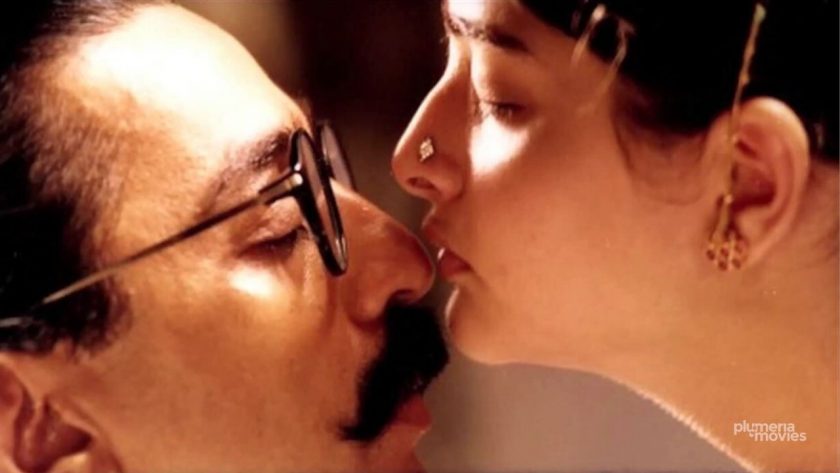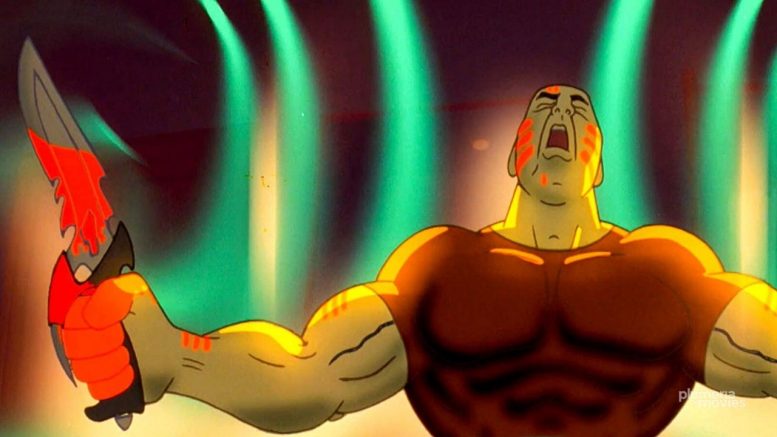Kamal Haasan turned 65 a few days back and his journey in the world of cinema is around 60 years old. This means there are more than 200 movies and tonnes of stories written for, against, and on him. In this article, I try to analyze a very particular period in his cinema career: The 2000s.
The 2000s was when Kamal Hassan- the actor, was given some of the most memorable characters by, well, Kamal Haasan- the writer. There were a bunch of films where the characters all had contrast ideologies, characteristics, and looks. If one looks really close, all of these had an underlying paradigm that was quite similar. All of these characters were, in some sense, inspired by certain animals and the characteristics they are related to. In this article, I try to analyse such characters through the movies’ narratives.

The Elephant And The Horse – Hey Ram!
There’s an 80-page analysis of Hey Ram called ‘Taming of the Unmanned Elephant’ where the author talks briefly about this. Saket Ram’s wife is raped and murdered and he’s beaten up badly by a group of Muslims on the night of India’s independence. He’s immensely disturbed and looks to seek revenge by killing any and every Muslim he sees on the road, with his revolver. He roams through the streets of Kolkata with a single notion of annihilating the entire community of Muslims, if need be.
That’s when he comes across this sight of an elephant whose trainer had been killed. The elephant looks untamed and restless, just like Saket Ram. Cut to the next day, when Saket Ram, who’s anger has now subsided, takes a stroll in the same neighbourhood. This time he sees the same elephant, standing next to the dead trainer, calmer than before.
Elephant
The third time we see an elephant in the movie, we are at Srirangam, where Saket Ram is off to meet the girl he’s about to marry. This elephant is all decorated and his legs are chained to the wall. This reflects Ram’s soon-to-be Grihastha life.
Saket Ram, as a character, is also quite like the elephant. He’s blessed (or rather cursed) with strong memory and the whole narrative revolves around his inability to get over his wife’s death, Altaf Tailor’s betrayal, and Mahatma Gandhi’s conspiracy against the Hindus.
Ram and Ram
Another very notable animal that, in fact, moves the narrative forward, is the horse. Saket Ram and Ram Abhyankar play a game of polo when Abhyankar and his horse meet with an accident. As a result, Abhyankar is paralysed, and his horse is critically injured. The Raja decides to kill the horse, and the writers decide to kill off Abhyankar.
Horses are usually associated with their ability to carry soldiers and run at greater speed. This characteristic is true to Saket Ram’s character as well. He’s given the ultimate burden of killing Gandhi. Also, another important fact about the elephant and the horse is that both of these animals are traditionally used during the war. Thus, the whole movie is about a single man’s war on Gandhi, amidst the ongoing war on religion and independence, with an Ashoka-isque ending to it.

The Monkey – Aalavandhan
Kamal Haasan’s Aalavandhan dealt with the consequences of a disturbed childhood and its effect on a person’s psyche long before Joker did. Kamal Haasan portrays dual roles- Nandu and Vijay- who’re twins and who go through the same physical and emotional trauma throughout their childhood because of their stepmother. While Nandu ends up in an asylum after killing his stepmother, Vijay goes on to become an army commando.
Very early in the movie, even before the introduction of Nandu, we see a monkey jumping around the jail area where Vijay and his wife Tejaswini (Raveena Tandon) wait to see Nandu. A bit later, after the whole conversation where Nandu establishes his hatred towards Teaswini, we see him jump over the grill trying to attack them. A classic ‘caged animal’ visualisation.
Kadavul Paathi
That is not the only time we see a monkey. When Nandu escapes the asylum later in the movie, we see a monkey that eventually leads up to a character-introduction song. The song quite efficiently visualizes between the Godly and barbaric qualities of the character.
If one notices closely at these two very different characters, one can find a very particular similarity between them: eerie demonstrations of violence in different instances. Both Nandu and Vijay, in a way, are animals. Smart animals, to be precise. Their mental and physical strengths go hand-in-hand. The only differentiation that can be made between these characters is that one of them is a cultured animal, and the other is barbaric and raw. We are in fact told very early in the movie that the reason Nandu is in the asylum and Vijay is not, was because of a coin-toss. This makes me wonder: What would have happened, had Nandu won the toss?

The Dog – Anbe Sivam
Anbe Sivam was about the journey of Nallasivam (Kamal Haasan) and Anbarasu (R Madhavan), and their ultimate discovery of God and Love. There’s also a dog named Sangu that plays a pivotal role in bringing Nalla and Anbarasu together. Sangu’s left foot is injured so is Nalla Sivam’s left leg. Both of them are injured in the same accident, where Sangu is the cause and Nalla Sivam is the effect. In fact, Nalla becomes Sivam after this accident.
Dogs are usually associated with loyalty and companionship. Much like the animal, Nalla Sivam is a communist who’s loyal to his people. He constantly fights against the marginalization of the labor force and pits himself against an MNC industrialist named Kandasamy Padayachi (Nasser). It’s during this time that he meets with an accident and is scarred, and partially paralyzed. A few years after this incident, he meets Anbarasu and their journey to Chennai from Orissa happen. This is when we see the companionship of Nallasivam, or Mr. Sivam, as Anbarasu would call him. They both embark on a journey of self-realization, communism, and in a way discover the God in them. There’s also a brief joke by Nallasivam about ‘Dog on spelled backward becomes God’.

The Bull – Virumaandi
The bull has always been associated with majesty and uncontrollable anger. The traditional game of Jallikattu has been carried out in villages to showcase the toxic masculinity involved in taming this angry, reckless bull. The bull will be released into a crowd of people and the group of participants tries to hang on to its hump, in an attempt to make it stop.
Virumaandi Thevar, a bull of a character, returned to his village CK Patti after spending time in Singapore. Despite being the focal point, he seems like an outsider to the city’s norms—akin to a bull in the game of Jallikattu. The inhabitants of CK Patti and Nallamanaikanur constantly pay attention to him. This is because among all the lands in these villages, only Virumandi’s has groundwater at a shallow depth of 15 feet.
Mirugam Paathi
The village looks at Virumaandi as an angry man with no rules whatsoever, just like how one would look at a bull. He’s untamed in the beginning of the movie and as the movie progresses, the girl he falls in love with changes him. He’s looking to start a new life and that’s when the girl is killed. He goes on a rampage holding nothing back, in an attempt to kill Kothala Thevar.
Let me know if you agree/disagree or if you’d like to add more about the movie, in the comments below. Also, this might not be the original intent of the maker(s), but as they say, ‘Art is Subjective’


Be the first to comment on "Kamal Haasan and his Animal Instincts | Hey Ram, Virumaandi"